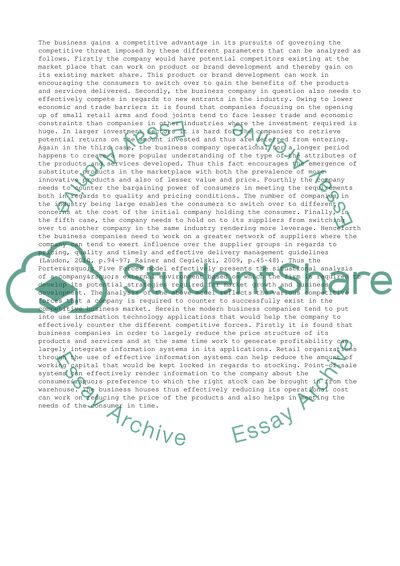Cite this document
(“Porter's Competitive Forces Model-Information Systems Research Paper”, n.d.)
Retrieved from https://studentshare.org/business/1445965-porter-s-competitive-forces-model-information
Retrieved from https://studentshare.org/business/1445965-porter-s-competitive-forces-model-information
(Porter'S Competitive Forces Model-Information Systems Research Paper)
https://studentshare.org/business/1445965-porter-s-competitive-forces-model-information.
https://studentshare.org/business/1445965-porter-s-competitive-forces-model-information.
“Porter'S Competitive Forces Model-Information Systems Research Paper”, n.d. https://studentshare.org/business/1445965-porter-s-competitive-forces-model-information.


